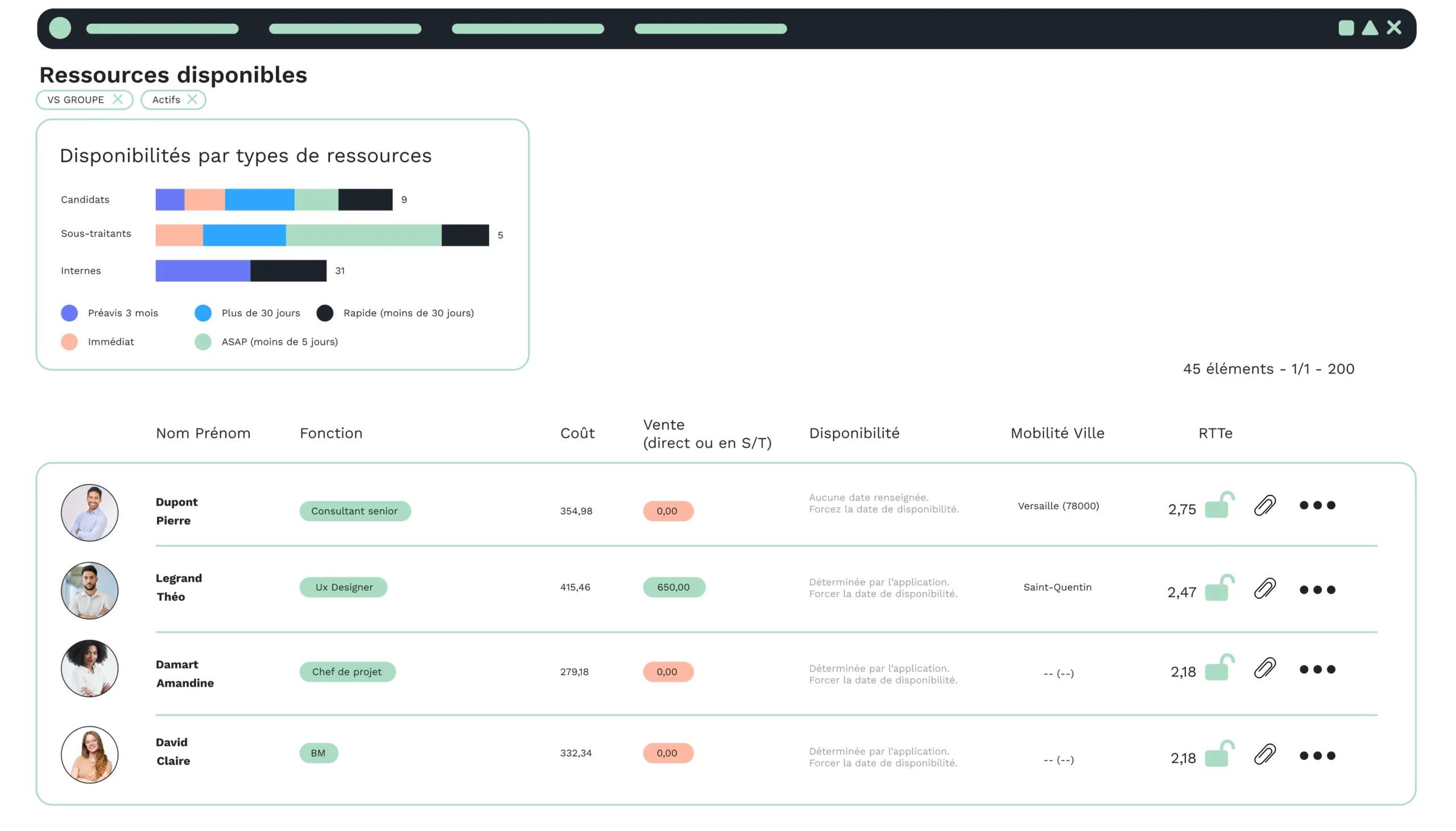Human Resources spend 4 to 5 hours a day dealing with administrative tasks. In other words, HR people spend more than half their day dealing with administrative matters.
This observation is paradoxical when you consider that 75%* of Human Resources professionals have chosen their profession for its human and social dimension.
Personnel administration is a time-consuming task. As a human resources manager or company director, your role is to ensure the application of labor law and its evolution within the company.
But how do you optimize personnel administration, which takes up 4 to 5 hours of the working day?
ERP can be a good investment for the company, firstly because its use is not limited to HR management, and secondly because the functionalities it offers are perfectly suited to the needs of the HR function.
But first things first.
What is personnel administration?
Personnel administration is an important part of running a business. It encompasses all tasks related to personnel and company organization:
- Personnel files,
- Payroll,
- Absences,
- Employee benefits,
- Etc.
Depending on the company’s size and organization, either the HR department or the company manager manages this part of the process.
The challenges of personnel administration
Legal issues
HR must ensure that the company complies with labor law (working conditions, working hours, etc.), and thus avoid sanctions from organizations such as URSSAF, occupational medicine, etc.
Economic issues
It’s all about optimizing company costs, and therefore finding the right compromise to meet the company’s needs in terms of headcount.
Social issues
Ensure that good labor relations are maintained between the company’s stakeholders, particularly in a complex economic context.
The impact of administrative management on HR day-to-day operations
Editions Tissot’s HR Barometer 2020 shows how the HR profession has evolved over the years. Here are the highlights for 2020:
If HR could make 3 wishes, they would like :
- Ensure legal compliance of decisions and written documents.
- Have the keys to guaranteeing regulatory changes.
- Reduce data entry and re-typing tasks.
This was without counting on COVID-19, which generated more requests from employees and company managers to respond to the new processes implemented within the company:
- Teleworking.
- Partial activity.
HR departments would benefit from tools to support their day-to-day tasks, in particular to enable them to :
- Save time and increase efficiency.
- Simplify their work.
- Reduce the use of paper.
- Secure processes and data.
BUT price is still a major obstacle for HR departments facing budgetary difficulties.
It’s worth noting that HR staff spend 4 to 5 hours a day on administrative tasks, when they’d rather be improving the quality of life at work, managing careers and skills, not to mention HR communications.
Key points from this barometer
It’s difficult for HR to keep up to date with employment law obligations and compliance. Indeed, regulatory changes evolve very rapidly. The health crisis has not helped the HR department’s business, adding new procedures such as teleworking and short-time working.
However, Human Resources staff say they don’t have the HR tools to support them on a day-to-day basis, mainly because of budgetary problems.
These HR management (HRM) tools are designed to save time and simplify HR processes.
How do you manage personnel administration?
Keep up to date on employment law
Personnel administration is central to a company’s long-term success. It’s all about keeping up to date with labor law and regulatory changes.
The administrative manager therefore needs to keep abreast of developments on a regular basis. Several factors influence the administrative management of personnel:
- Employment law: electronic newsletters,…
- In the news: COVID-19,…
- Social developments: hiring,…
- Technical developments: new technologies,…
Use automation tools
HR tools such as ERP can be used to automate tasks and save time. In fact, the HR barometer published by Editions Tissot showed that HR staff spend more than half their working day on administrative tasks.
An automation tool simplifies the management of payroll, expense reports, vacations, time tracking, etc.
On the employee side, they have access to their data and can consult it freely, as well as submit requests for time off, absences, etc.
The reporting available within the tool makes it possible to analyze and make decisions that are beneficial to the company.
Finally, data is centralized, providing a global, cross-functional view.
What’s the point of digitizing personnel administration with an ERP?
As mentioned above, HR departments want HR tools that enable them to :
- Save time and increase efficiency.
- Simplify their work.
- Reduce the use of paper.
- Secure processes and data.
In concrete terms, why digitize personnel administration with an ERP?
Here are 7 reasons:
1. Save money
HR has budgetary problems, which is an obstacle to implementing an HR tool. Yet an HR solution can save you money.
Reducing the use of paper and postage to send out pay slips, for example, are just some of the savings that can be made.
The return on investment is easily quantifiable and positive in the short term.
2. Saves time
An HR tool can automate many time-consuming tasks, saving time on manual data entry.
3. Reduce data entry errors
Fewer manual processes mean fewer input errors. The same data does not have to be re-entered several times, with the risk of error.
4. Productivity gains
Human resources spend less time on heavy, time-consuming tasks that have been automated, resulting in productivity gains within the department; tasks that used to take 4 to 5 hours are now completed in just a few clicks.
Saving time means more added value for every HR employee.
5. A better quality HR service
Communication between HR and employees is greatly improved; on the one hand, because the company offers a tool that makes employees more autonomous and enables them to consult their data (leave, absences, training, etc.); on the other hand, response times to HR requests by employees are reduced.
6. Simplification of HR processes
HR software harmonizes HR processes and centralizes information. This makes information more easily accessible.
7. Almost automatic updating of regulatory documents
The HR solution provider must offer a tool that complies with regulations. With ERP, HR has compliant documents without any effort. A real asset in an already busy day.
To conclude on how to improve personnel management with ERP
Personnel administration takes up a large part of Human Resources time. Implementing an ERP system within your company will save time on time-consuming administrative tasks.
The HR department’s budgetary problems are still an obstacle to investing in an HR tool, yet there are solutions on the market which offer optimized pricing on the one hand, and a rapid return on investment and savings on the other.
Read also







